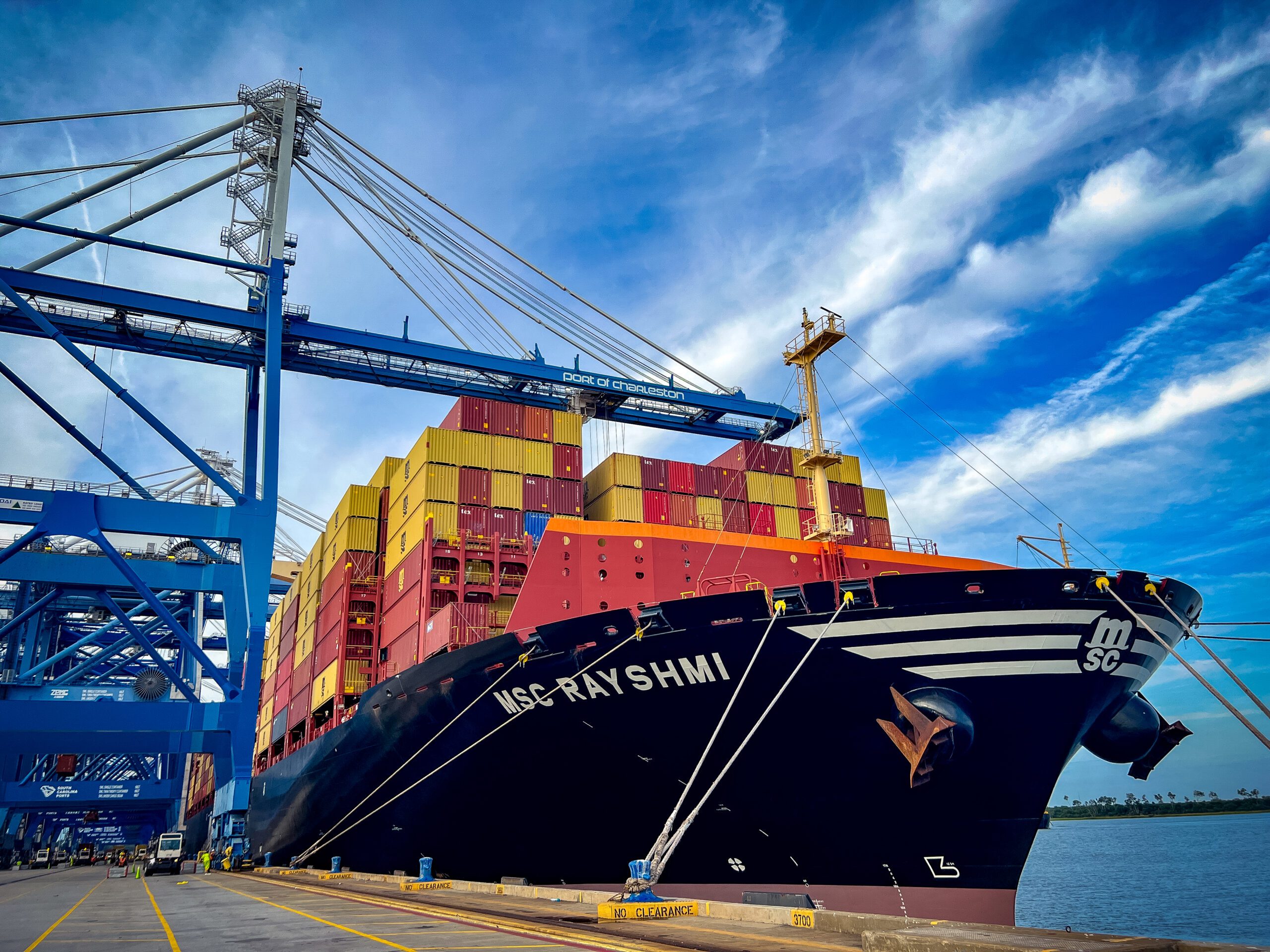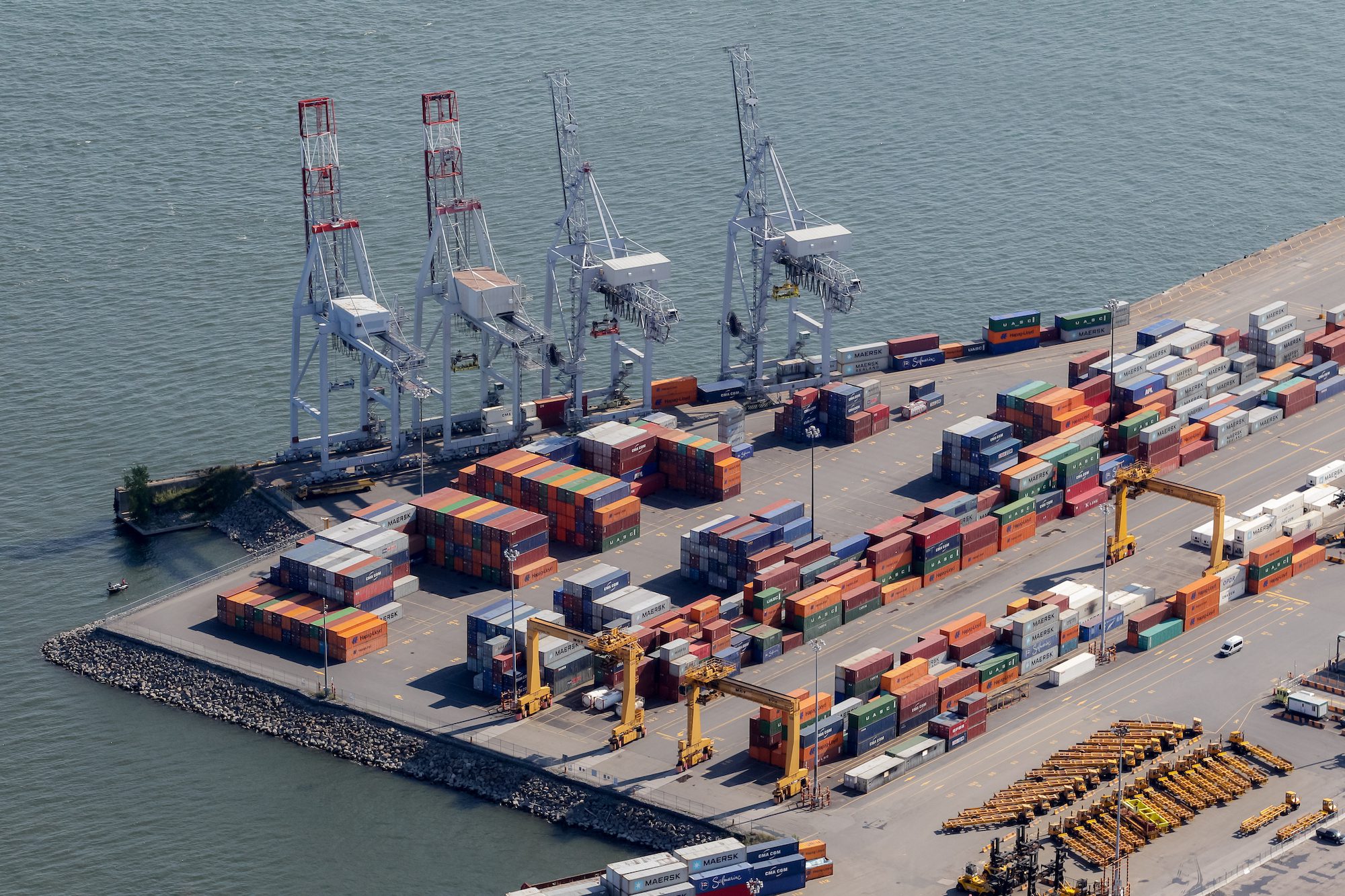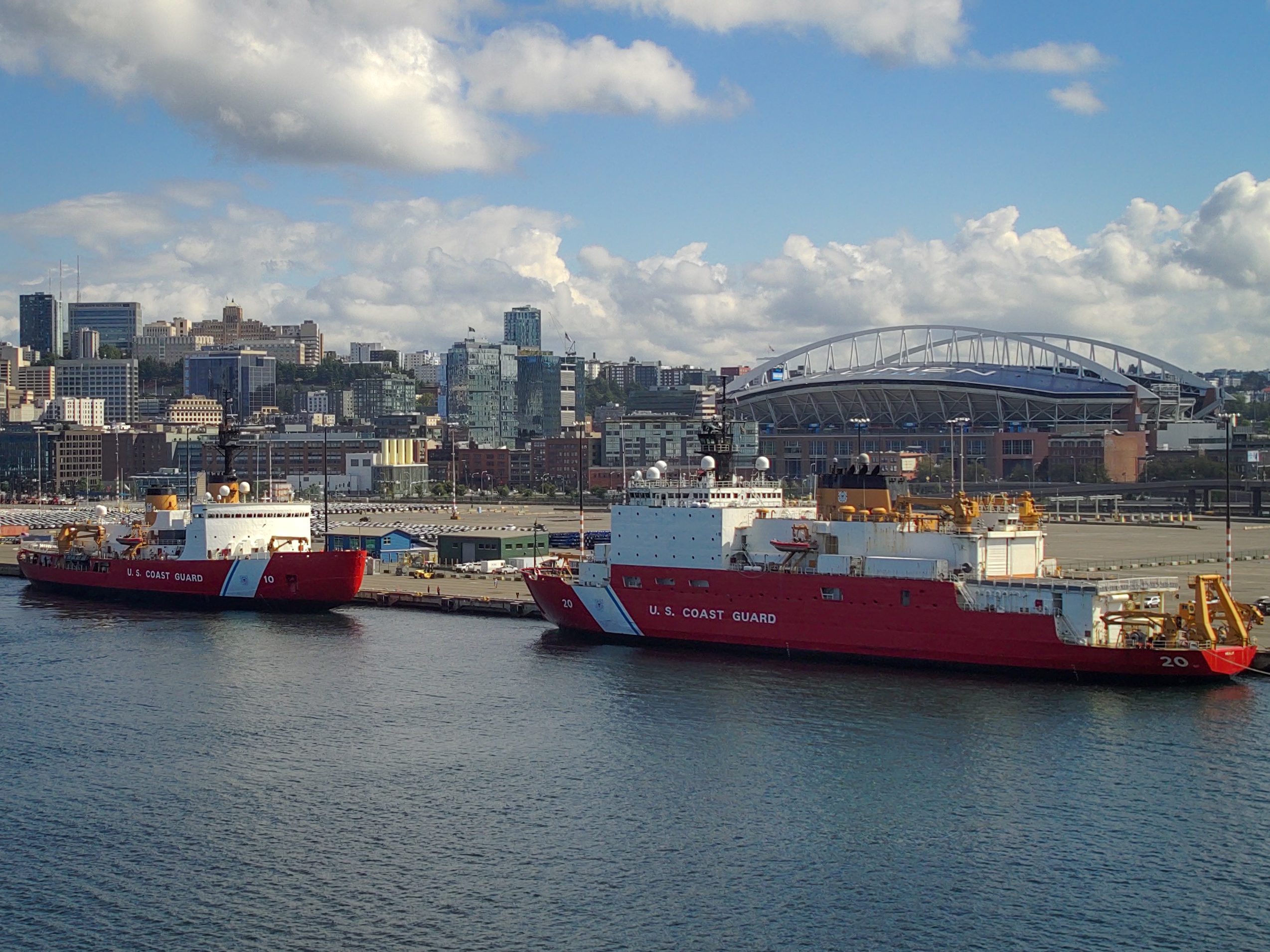South Carolina Ports is putting Charleston Harbor’s new 52-foot depth to good use, handling a container ship at the deepest draft to-date.
The 12,119 TEU-capacity MSC Rayshmi recently set a record for deepest draft at SC Ports, arriving at 48 feet and 11 inches of draft. Five post-panamax cranes worked the ship at the Port of Charleston’s Wando Welch Terminal, moving 2,758 containers on and off the ship.
With four of the five deepening contracts already completed, the Port of Charleston now has a 52-foot depth leading up to its two biggest container terminals — Wando Welch Terminal and Leatherman Terminal. The 52-foot depth removes tidal restrictions for fully laden, post-Panamex vessels.
“SC Ports can efficiently handle fully loaded mega container ships at any tide thanks to our strategic investments in port operations, the talent of our maritime community and the success of the Charleston Harbor Deepening Project,” SC Ports President and CEO Barbara Melvin said.
The Charleston Harbor Deepening Project will conclude this fall exactly five years after work began to deepen the harbor from its previous depth of 45 feet. The remaining contract involves deepening the channel to SC Ports’ North Charleston Terminal to 48 feet.
“The Charleston Harbor Deepening Project will be completed faster than any project of its kind in the country,” Melvin said. “This amazing feat was made possible with the great support of Governor Henry McMaster, the South Carolina Legislature and the Congressional delegation, and through our strong partnership with the US Army Corps of Engineers, Charleston District.”
SC Ports is also reporting August volumes of 223,411 TEUs and 123,011 pier containers at Wando Welch Terminal, Leatherman Terminal and North Charleston Terminal, up from 216,097 TEUs and 119,872 pier containers in July 2022. Compared to August 2021 TEU volumes were down about 5% while pier containers slid 8%.
SC Ports’ Columbus Street Terminal saw 16,410 vehicles move in August, while the Inland Port Greer and Inland Port Dillon handled a combined 12,977 rail moves.
“While supply chain challenges continue, ocean carriers and cargo owners can diversify their gateways to take advantage of SC Ports’ berth availability and terminal fluidity,” Melvin said. “We are applying the lessons we learned in the past year to implement responsive supply chain solutions to ensure we can efficiently handle cargo for exporters and importers throughout the Southeast.”
To maintain cargo fluidity, SC Ports has deployed creative solutions, such as opening gates seven days a week for motor carriers, prioritizing vessels with balanced imports and exports, and deploying thousands of chassis through SC Ports’ new SMART Pool.

 Join The Club
Join The Club











